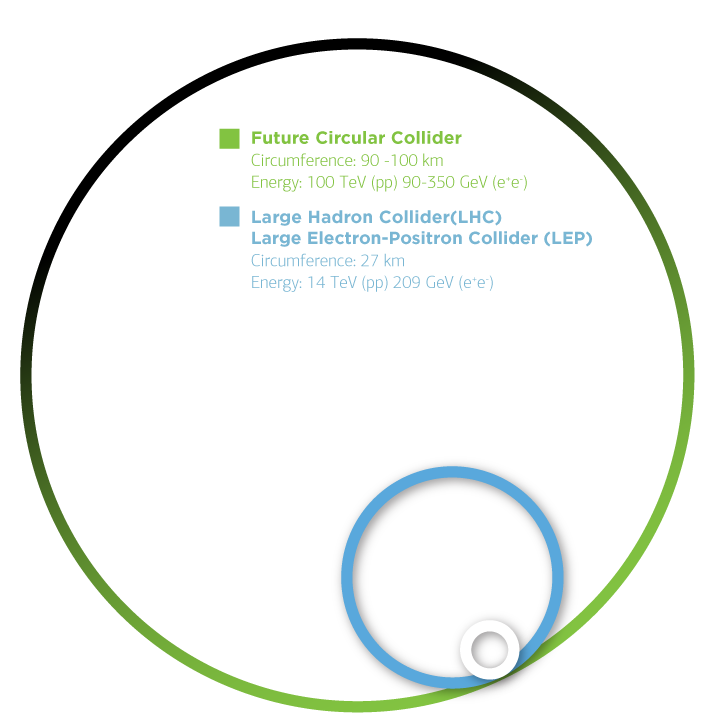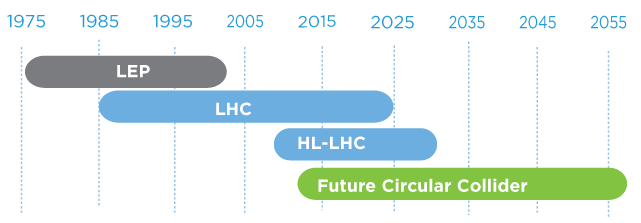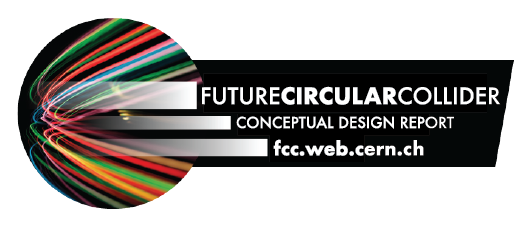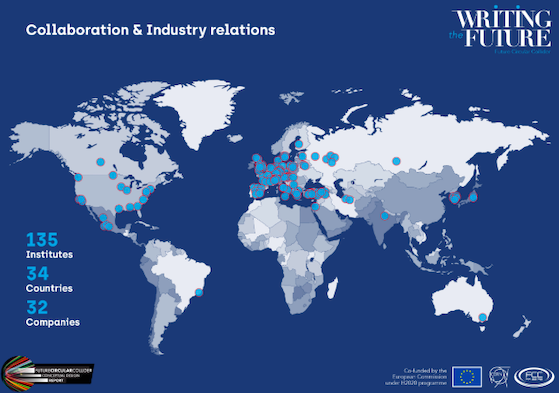
The Lepton Collider (FCC-ee)
The first branch of the FCC design study (FCC-ee) is a high-luminosity, high-precision lepton collider located in the same tunnel as a possible precursor to the hadron collider, and complementary to it.
An electron-positron collider will perform high-precision studies of the Higgs boson and other known particles. Delivering collision energies between 90 and 360 GeV and high luminosities it will offer unique sensitivity to possible new phenomena at energies of tens of TeV.
A lepton collider offers a very clean experimental environment with low backgrounds - as electrons & positrons don't have any internal structure - that allow very precise measurements. The FCC-ee beams will contain trillions of electrons and before the collision points will be squeezed to about 50 nm to achieve the maximum number of collisions.
FCC-ee will offer a decisive improvement in precision measurements of electroweak observables and of particle masses that would play a crucial role in searching for new physics. The observation of significant deviation(s) from the Standard Model predictions could mark a discovery and indicate the scale at which new physics is at play.
A future lepton machine would bring the comparison between theory and experiment to a completely new level allowing for profound investigations of the electroweak symmetry breaking, and begin a broad search for new physics over several orders of magnitude in energy.

The Hadron Collider (FCC-hh)
The great potential of hadron colliders to discover new particles has been demonstrated in the past decades, following the rapid development of accelerator technology. The last building blocks of the Standard Model have been directly observed by experiments at previous hadron colliders (SppS, Tevatron, and LHC).
A future 100 TeV hadron collider (protons and heavy-ions) will have an energy seven times that of the LHC, a step equal to the one that took us from the Tevatron to the LHC. Such a collider will give access to the smallest scales and the most energetic phenomena in nature.
Billions of Higgs bosons and top quarks will be produced, creating new opportunities for the study of rare decays and flavour physics. A future hadron-hadron collider will allow the study of Higgs and gauge boson interactions to be extended to energies well above the TeV scale, exposing in detail the mechanism underlying the breaking of electroweak symmetry.
The programme of a future collider facility must aim at conclusive responses to key quantitative and conceptual questions that may not
be answered otherwise. For example: how does the Higgs couple to itself ? Do the light generations of
fermions get their mass from the Higgs boson ? What was the nature of the electroweak phase transition ? Are weakly interacting massive particles (WIMPs) a component of Dark Matter?
The high-energy hadron collider (FCC-hh) operating at 100 TeV, with a total integrated
luminosity 30 times higher compared to the LHC provides a unique opportunity to address these questions while it can profit from the complementarity of a lepton machine (FCC-ee) that can be realised as a first step.
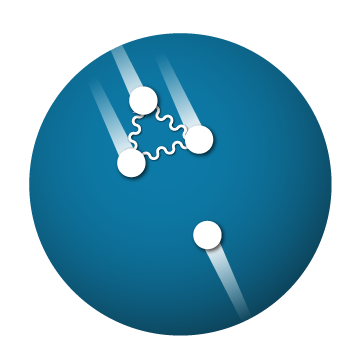
Hadron-Lepton Collider (FCC-he)
The study for a hadron-lepton collider aims to bring the physics of deep inelastic electron-proton scattering to a new horizon.
A hadron-lepton collider could be the finest microscope for studying quark-gluon interactions and possible further substructure of matter in the world and synchronously operate with the FCC-hh.
This programme, accompanied by unprecedented measurements of strong and electroweak interaction phenomena, the hadron-electron collider is a unique complement to the exploration of nature at high energies within the FCC complex.

High Energy LHC (HE-LHC)
The HE-LHC project features a proton collider, which extends the current energy frontier by almost a factor 2 (collision energy of 27 TeV) and an integrated luminosity of at least a factor three larger than the HL-LHC.
In connection with four experimental detectors, this infrastructure will deepen our understanding of the origin of the electroweak symmetry breaking, allow a first measurement of the Higgs self-coupling, double the HL-LHC discovery reach and allow for in-depth studies of new physics signals arising from future LHC measurements.
The project re-uses the existing LHC underground infrastructure and large parts of the injector chain at CERN. While 27 TeV is well below the 100 TeV target of the FCC-hh, the increase of energy and luminosity compared to the HL-LHC represents a significant improvement over the HL-LHC reach.
